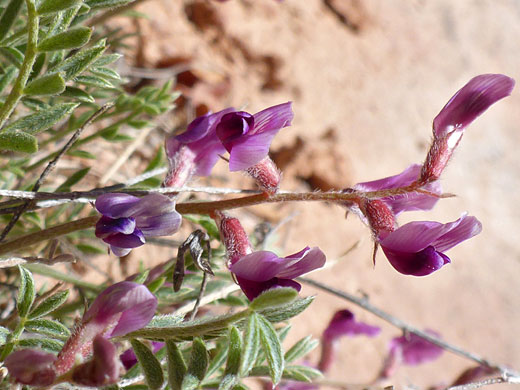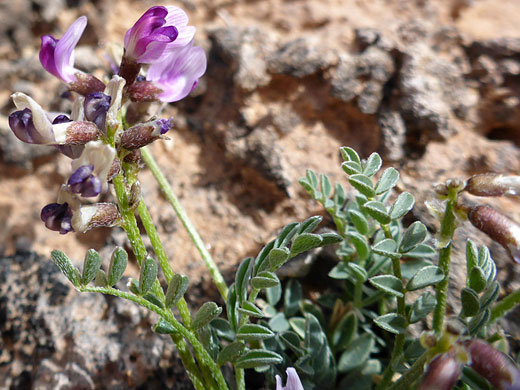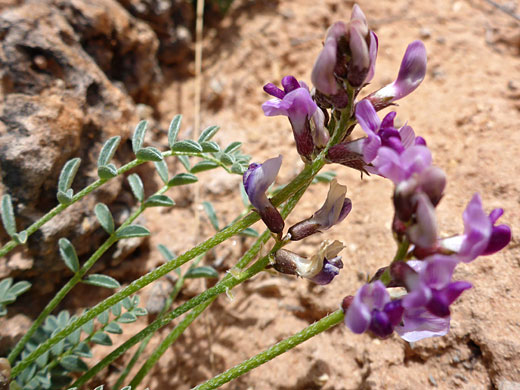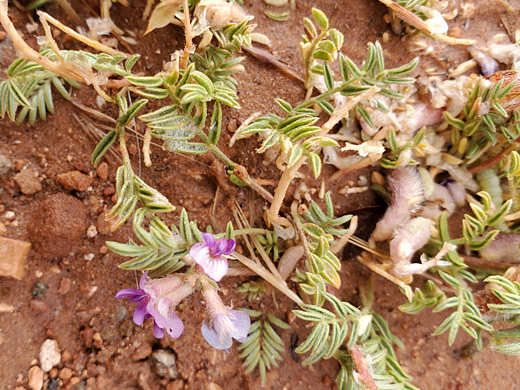Common name:
Rimrock milkvetch
Family:
Scientific name:
Astragalus desperatus
Main flower color:
Range:
South/east Utah, north Arizona, and small adjoining areas of Colorado and New Mexico
Height:
Up to 6 inches
Habitat:
Sandstone outcrops, sandy flats, canyons, pinyon-juniper woodland; up to 7,000 feet
Leaves:
Up to 5 inches long, divided into between 7 and 17 oblanceolate to elliptical leaflets
Season:
April to July
Astragalus desperatus is endemic to the Colorado Plateau, where it grows in sandy or lightly wooded locations. The compound leaves are divided into up to 17 small leaflets, less than half an inch long; these are fairly thick, folded up along the midvein, pointed at the tips and sparsely long-hairy on both sides, more so on the undersurfaces. Plants produce many, short, branched, reddish stems, generally staying close to the ground. Stems are covered by white, appressed hairs.
The inflorescence is a vertical spike up to 5 inches tall, bearing between 3 and 18 alternately-arranged flowers, quite well-separated. Flowers are small, around a quarter of an inch long, with a red calyx, a pink banner petal and darker wing/banner petals, becoming bluish-purple as they wither. Seed pods are pendent, thick, short (around half an inch), lightly curved, and also hairy.
The inflorescence is a vertical spike up to 5 inches tall, bearing between 3 and 18 alternately-arranged flowers, quite well-separated. Flowers are small, around a quarter of an inch long, with a red calyx, a pink banner petal and darker wing/banner petals, becoming bluish-purple as they wither. Seed pods are pendent, thick, short (around half an inch), lightly curved, and also hairy.
All Contents © Copyright The American Southwest | Comments and Questions | Contribute | Site Map









